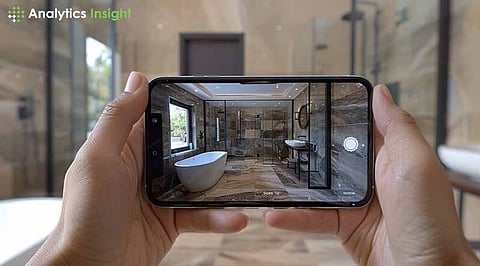

Is education ready for its next big leap? Today, Augmented Reality is revolutionising how knowledge is delivered and taken. AR has quickly turned into a fun tool to make subjects come to life — in classrooms and everywhere in between. AR is revolutionizing traditional ways of learning, bringing 3D models into biology lessons, virtual field trips in history class and more.
However, the AR education market is emergent and poised to soar, with possibilities for students and educators running wild. Let’s take a look into the top AR apps revolutionising learning next 12 and 24 months, offering unique insights and experiences of learning in different fields.
Offering strong AR education, especially for science-based learning, Merge EDU stands out. Students can hold and look at 3D models with 3D models right in their hands using Merge’s Cube. The app covers topics in chemistry, biology and physics and lets the students manipulate molecules, view planets and see anatomy. Imagine the visual aids that would otherwise be impossible to recreate in a traditional classroom in terms of merging EDU.
Science Classes: Run complex molecular structures or make it easy to see the human body.
STEM Learning: Help improve understanding in subjects such as physics and engineering.
Homeschooling: Engage students in interactive science lessons out of traditional schools.
Kids drawings come to life in Quiver. However, Quiver is designed for younger students who can then colour an image, and then see it morph into a moving 3D figure on the students' devices. With art and technology combined, the app keeps both children interested and creative.
Art and Creativity: Help make drawing activities more interactive and more engaging.
Early Education: Help young children learn about technology in a fun and easy way.
Creative Projects: Apply 3D art in storytelling or narrative activities.
Geography and History: It allows the students to explore famous landmarks or ancient ruins.
Environmental Studies: Head into the ocean ecosystems, or walk through the rainforest.
Cultural Education: It introduces students to different cultures in real life settings.
The JigSpace library compiles interactive 3D “Jigs” for students to learn about, from how a car engine works, to the parts of a cell. This app simplifies complex information and shows students simple, digestible visuals that help them better understand technical concepts.
Engineering and Mechanics: It helps students to visualise mechanical parts and processes.
Biology and Chemistry: Show the details of the structure of cells or molecules.
Practical Skills: Discover everyday appliances or tools with 3D interactive models.
With Assemblr EDU, students and teachers can use their creativity to create their own AR content and learn further subjects. Users can build 3D math-related and art models with an intuitive interface. AR allows students to take the reins of their learning with this app by going deeper into subjects you explore.
Class Projects: Allow students to make presentations in 3D or AR.
Visual Arts: Early adopt AR for use in classes related to art and design.
History Lessons: Reenacting historical artefacts or sites allows students to do so.
With AR Flashcards, it won’t be a burden for you to come up with activities for your child’s early childhood education; you can help your child learn all he needs (vocabulary, alphabet, and numbers). Using AR, every flashcard features a 3D animated object corresponding to a letter or number, which provides an engaging way for young learners to learn.
Early Literacy: Show children how to write the alphabet, and simple words in a visual way.
Math Skills: Draw examples of numbers with animation.
Home Learning: It offers parents an interactive way to teach young people.
As an extension to villages in the watershed, Froggipedia gives students the ability to virtually dissect and study the anatomy of a frog. Froggipedia brings in insights into the anatomy of amphibians without needing real specimens and is designed specifically for biology students. For schools with a budget or students who are reluctant about the dissection process, it’s a good alternative.
Biology Classes: Anatomy and physiology without physical specimens.
Environmental Awareness: Stop dissection of animals and support ethical learning.
Detailed Study: Have a close-up look at internal organs and systems.
With its focus on 3D games and creation and interactive stories, CoSpaces Edu is a great app for us to use as a whole class activity in several different subjects including, but not limited to, history and math, as well as literature. The app can integrate lessons into a lesson, and visual concepts such as architectural design to narrative plot can be taught by students.
Coding Skills: Teach students how to code with block-based or script-based coding.
History and Culture: Use imagination or bread-powered electronics.
Creative Storytelling: It allows students to write interactive stories and simulations.
Medicine and health studies can be enhanced by taking Anatomy 4D, which presents the human body as seen in an interactive view. Anatomy and biology students especially like that students can explore detailed 3D images of organs, muscles, and other body systems.
Medical Studies: To help medical students visualize human anatomy.
Health Education: Teach high school students about body functions.
Self-Learning: Pack immersive visuals together and enable independent study.
iNaturalist’s Seek is an AR app that lets students identify plants and animals in real time with their smartphone cameras. This app is designed for biology, it encourages students to interact with their natural environment, find species and learn about ecosystems for themselves.
Biology and Ecology: Teaches students about local flora and fauna.
Environmental Awareness: Sustainably interact with nature.
Field Trips: It can provide real time identification on school trips and hikes.
These are some of the AR apps that show how education is becoming more interactive and engaging. But now, from science labs to history museums, augmented reality is helping recreate learning experiences with immersive ways to learn about complex subject matters. These tools are great for students to deepen their understanding of the world, and be more engaged and active participants in their own learning.
